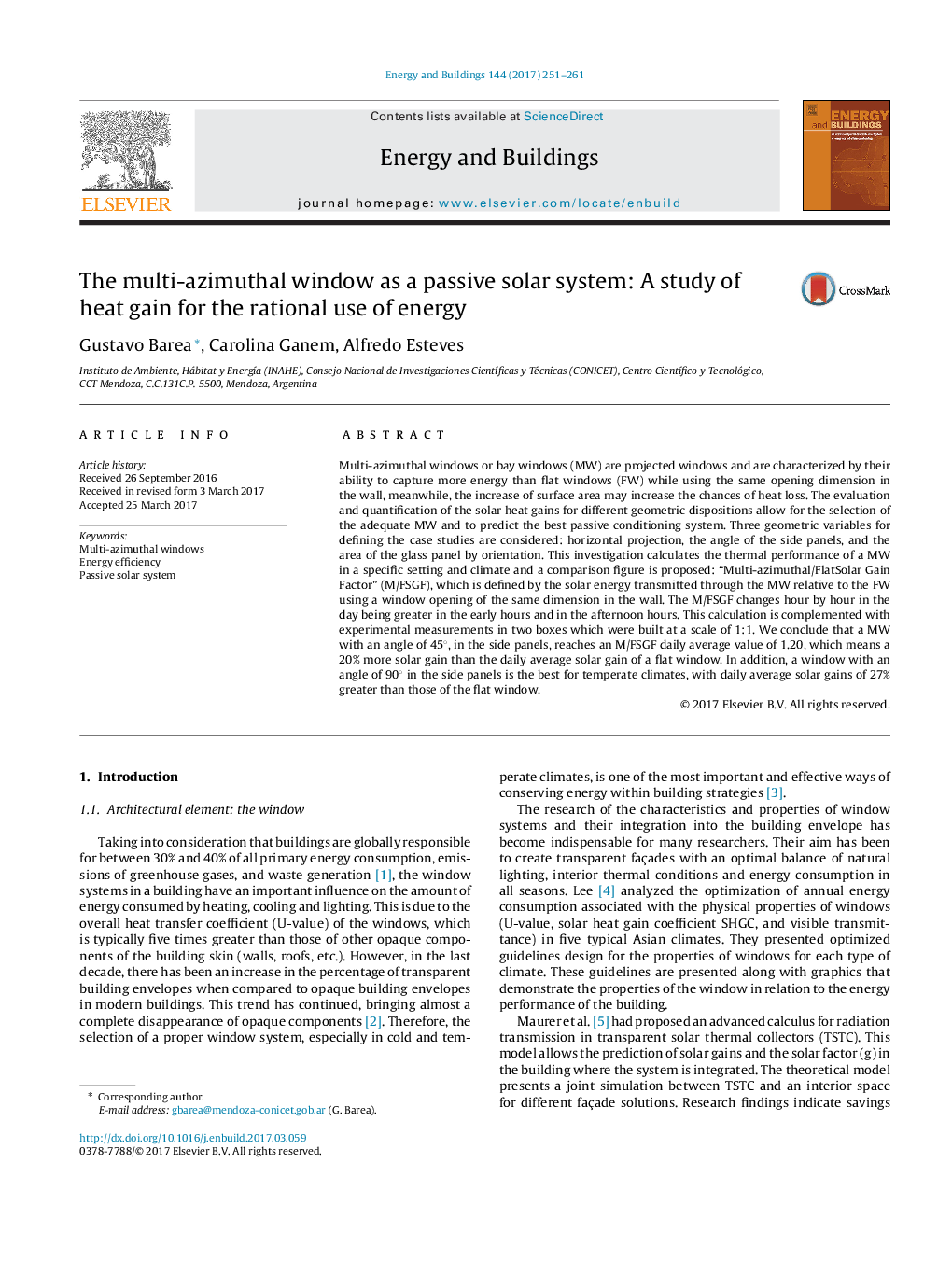| Article ID | Journal | Published Year | Pages | File Type |
|---|---|---|---|---|
| 4919191 | Energy and Buildings | 2017 | 11 Pages |
Abstract
Multi-azimuthal windows or bay windows (MW) are projected windows and are characterized by their ability to capture more energy than flat windows (FW) while using the same opening dimension in the wall, meanwhile, the increase of surface area may increase the chances of heat loss. The evaluation and quantification of the solar heat gains for different geometric dispositions allow for the selection of the adequate MW and to predict the best passive conditioning system. Three geometric variables for defining the case studies are considered: horizontal projection, the angle of the side panels, and the area of the glass panel by orientation. This investigation calculates the thermal performance of a MW in a specific setting and climate and a comparison figure is proposed: “Multi-azimuthal/FlatSolar Gain Factor” (M/FSGF), which is defined by the solar energy transmitted through the MW relative to the FW using a window opening of the same dimension in the wall. The M/FSGF changes hour by hour in the day being greater in the early hours and in the afternoon hours. This calculation is complemented with experimental measurements in two boxes which were built at a scale of 1:1. We conclude that a MW with an angle of 45°, in the side panels, reaches an M/FSGF daily average value of 1.20, which means a 20% more solar gain than the daily average solar gain of a flat window. In addition, a window with an angle of 90° in the side panels is the best for temperate climates, with daily average solar gains of 27% greater than those of the flat window.
Related Topics
Physical Sciences and Engineering
Energy
Renewable Energy, Sustainability and the Environment
Authors
Gustavo Barea, Carolina Ganem, Alfredo Esteves,
